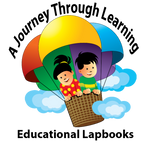I read an interesting blog post once. It inspired me to think about my own experiences raising a boy. Five years ago, I would have been on the "other" end of this argument. Except in that five year span, my sweet little boy turned 12! Before him, I had successfully raised 3 daughters. In their childhood, we had escaped with only 1 broken arm and 2 broken noses. I was confident that if I had raised THREE girls, surely I could handle ONE boy! Then this boy got mobile! In five, years, I have gotten him off of roofs, out of 20 ft trees, watched as he dug a "moat," in our backyard and added a "second" story to his already 25 foot treehouse. There are MANY other adventures I could write here, heck I could write a book.
My point is that children learn BY doing! I think we have become a society that is so scared of the ugly world around us that we are bringing that fear into our private homes. Yes, our country is at war. Yes, bad people kidnap children, and yes, there are very weird people in our neighborhoods that send their little darlings off to something called school every day. As parents, we cannot impose these fears onto our children. We cannot keep them under our wing forever. Playing in the mud filled with nasty germs will not kill them. It just makes them dirty! Yet, with that first feeling of dirt, the adventures begin.
Giving them their "own" tools so that dad's stay in the garage is learning responsibility, correct way to use and take care of things that belong to him and the safety. They learn that you have to nail three boards together to make a hut because two will blow over with the wind. They learn to tie off the tree they are cutting down for the second story on the treehouse, or it will fall the wrong way. While digging out the moat, they learn how to remove roots, and at what level water can be sprung from the ground. They also discover while digging that all types of critters live in the dirt. Some, like crawfish you can even bait and catch with pieces of ham! Now, a completely new adventure begins. Once they have build fishing poles out of whittled sticks and string, where will they cook them? So, another adventure begins. They build a cart out of trees, woods, and nails to haul the old forty-five pound Chiminea out of the garage so they can build a fire! I could go on and on.
In each of these adventures, he is learning, thinking, growing. Yes, there are dangers. He could fall out of a tree, drown in the 3 foot moat, or be burned my fire; or, nothing will happen, and he will grow up with amazing adventures to tell his children. I choose to experience the latter! Our children have a lifetime to worry! So, for the few creative years where is not afraid to try and fail at life, I will keep the kool-aid pouring and the first-aid kit filled.



